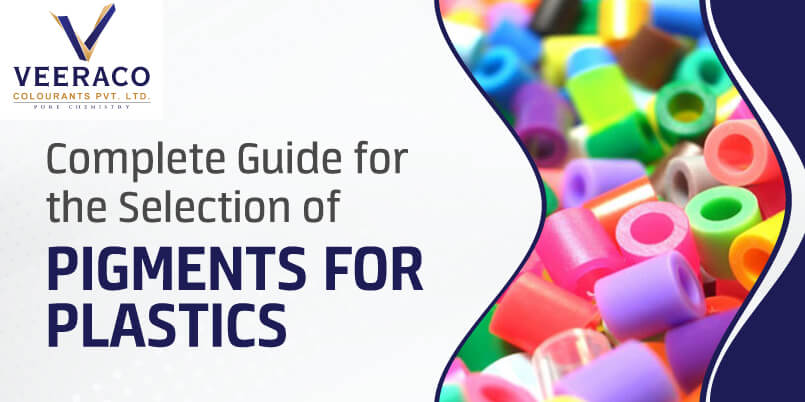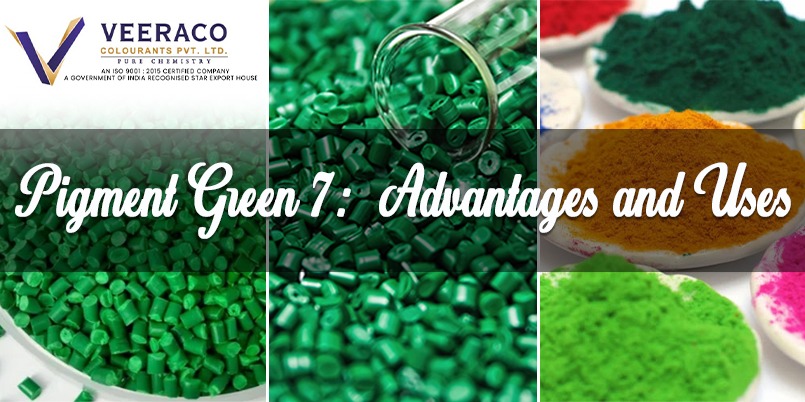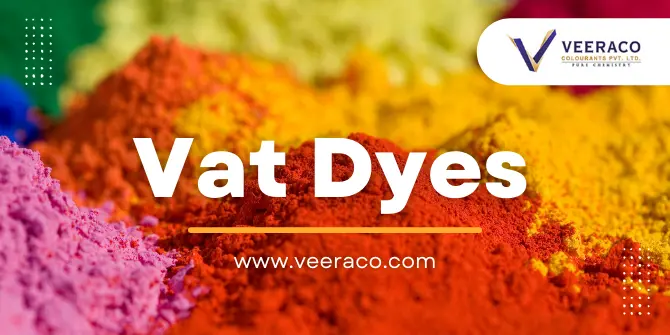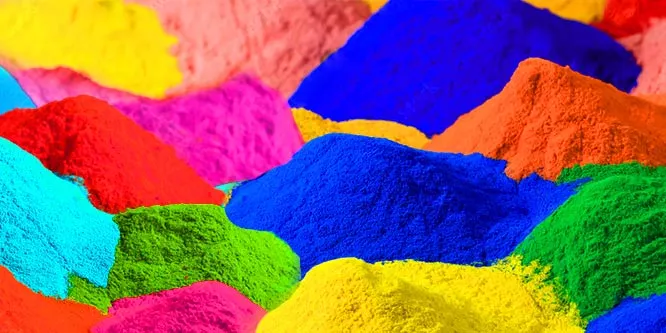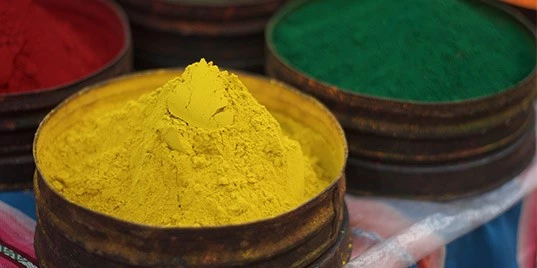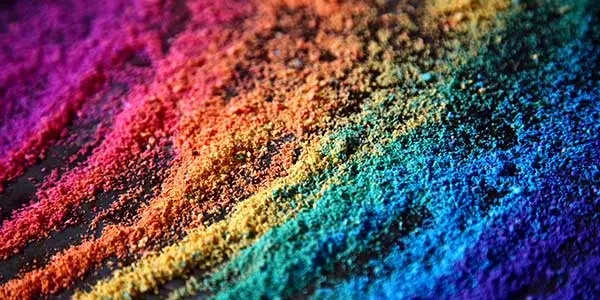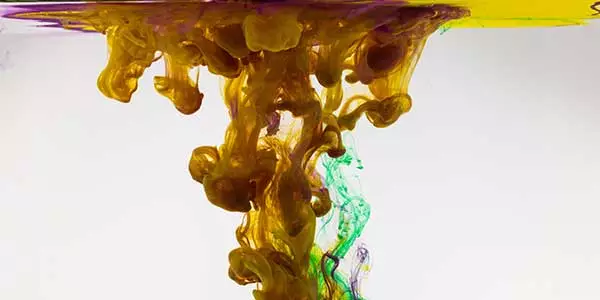Plastic Pigments - The Complete Guide on How Colourants Work
- Admin
- Oct 16, 2024
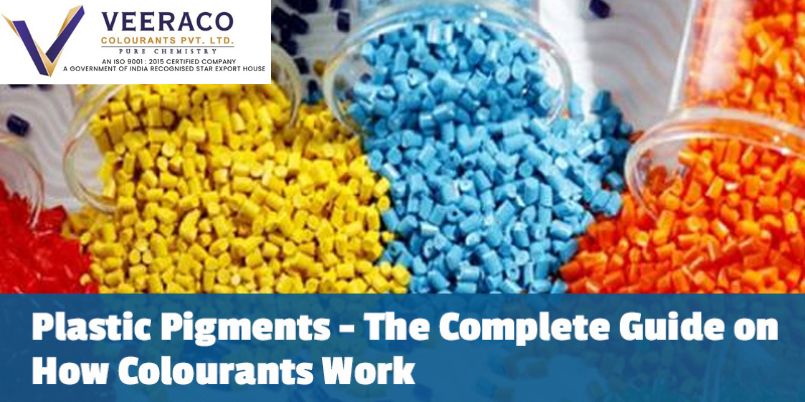
Plastic products have become common in our present-day world, and nearly every facet of our daily activities involves one form or another of plastic. One attractive characteristic of plastics is that they come out in diverse colors. This can be achieved by utilizing plastic pigments that improve the aesthetic value of plastic products and serve other purposes, such as enhancing resistance to environmental challenges and durability. In this blog, we will explore different aspects of the field of plastic pigments, including how they work, the kinds and types of colorants available, and finally, we will consider it from the point of view of plastic pigment manufacturers who shape the industry.
What Are Plastic Pigments?
Plastic pigments are substances used to colorize solid materials made from polymer compounds. Unlike, those that dissolve into the polymer, pigments remain insoluble and reside as tiny particles within materials. Thus, if one intends to achieve a specific color on a given item, these pigments must be mixed with them during manufacturing. Using these elements in designing plastics determines coloring apart from influencing texture and finishing touches, amongst other factors relating to final product aesthetics.
How Do Plastic Pigments Work?
The working principle behind plastic pigments is based upon their ability to absorb or scatter light waves at given frequencies, hence creating their contributions towards the overall appearance or coloration (color). What we see subsequently depends on what kind of light the pigment scatters back because, for instance, the red pigment absorbs all light except red and thus appears red when seen by human eyes.
Pigment addition to polymers involves mixing powder from carboxyl with granules or base polymers; this mixture is later heated to cause melting before being extruded so that there can be even distribution through various parts involving molten liquid particles inside the material phase. Pigments must be uniformly distributed to have a consistent solid color across the product.
Learn more here: The Fundamentals of Dyes and Pigments
Types of Plastic Pigments
Plastic pigments can be broadly categorized into organic and inorganic colorants, each with its characteristics and uses.
- Organic Pigments
Organic pigments are carbon-based substances that occur naturally or are synthesized. We have bright colors, which make them appropriate for applications where there is a need for vibrant hues. Examples of standard organic pigments used in plastics include AZO, Phthalocyanine, and Quinacridone.
- Inorganic Pigment
Inorganic pigments are mineral-based compounds and are typically more stable than organic ones. Thus, their use is often linked with applications where durability issues related to UV light exposure or chemical resistance matter most (Berger 33). Some examples include titanium dioxide (TiO2), iron oxide (FeO), and carbon black (CB), among others.
- AZO Pigments
The most common organic pigments are known for their bright reds, oranges, and yellows. They are widely used in plastic products that require solid and vibrant colors.
- Phthalocyanine Pigments
These types of pigments have excellent color strength as well as stability, especially when it comes to shades of blue and green. Therefore, they have found many applications within the plastic industry, including packaging materials and motor vehicle parts.
- Quinacridone Pigments
One thing about these pigment types is that they produce intense magentas or violets. Quinacridone pigments exhibit remarkable light fastness and heat resistance and can work well in high-performance polymer applications.
- Titanium Dioxide (TiO2)
Among plastic's most used white pigments is titanium dioxide, which gives it the perfect opacity and attractiveness necessary for clean white looks. It also acts as a base for making light-coloured and pastel plastics.
- Iron Oxide
Iron oxide pigments are commonly used to make red, yellow, and brown colors. These possess excellent UV stability and are thus often employed in outdoor applications such as plastic fencing, garden furniture, or construction materials.
- Carbon Black
This pigment is vital in black-colored plastics production, where it acts as a reinforcing agent that enhances mechanical performance properties like strength and durability of the plastic.
The Role of Plastic Pigment Manufacturers
Plastic pigment manufacturers have an essential role in the plastics industry by developing and supplying a wide range of pigments that meet the specific needs of different end uses. In doing so, these manufacturers spend heavily on research and development to develop pigments that have better performances, like improved light-fastness, color strength, or heat stability.
Leading plastic pigment manufacturing firms are also committed to ensuring sustainability, whereby we produce environmentally friendly pigments for reduced environmental impact caused by plastics production. These include heavy metal-free pigments alongside other harmful substances, while others develop those that can be easily recycled into other forms, thus enhancing the recyclability of plastic products.
The Manufacturing Process of Plastic Pigments
There are several steps involved in the manufacture of plastic pigments, each being crucial towards the quality as well as uniformity of the final product.
- Raw Material Selection
Firstly, raw material selection takes place during pigment fabrication. This usually involves picking up appropriate chemical compounds capable of producing desired colors for organic pigments. In contrast, minerals such as titanium dioxide or iron oxide have to be mined for inorganic pigments and then processed accordingly.
- Synthesis
The synthetic process occurs when organic pigments' chosen chemical compounds engage with one another chemically to form a single pigment. This process can entail cooling, heating, or mixing compounds under specific conditions to have a desired pigment.
- Milling and Dispersion
Once the pigment is synthesized, it is milled to reduce its particle size and create uniformity. The smaller the pigment particles, the better they can disperse within plastic for consistent coloring. A carrying resin is mixed with the pigment, thereby helping in the even distribution of this substance all over plastic.
- Quality Control
Quality control is an essential part of the pigment manufacturing process. The pigments undergo various tests that examine such features as color strength, particle size, and dispersion quality. They are also tested for compatibility with different plastic types and must comply with industry safety standards and performance requirements.
Applications of Plastic Pigments
Plastic pigments have applications across numerous industries due to their diverse uses. Among other applications, some common ones include:
- Packaging
The packaging industry extensively employs plastic pigments to achieve visually appealing packaging materials. From brightly colored bottles to attention-grabbing labels, pigments are meant to increase brand appeal through packaging products that have been done suitably by them.
- Automobiles
In the automobile industry, plastic pigments are used to tint a wide range of items, including dashboards, trim parts, and external components. Inorganic pigments are desirable mainly as they are durable and UV resistant, which is important for sustaining the appearance of automotive parts exposed to sunlight.
- Consumer Goods
Plastic pigments also have widespread applications within consumer goods such as toys, electronics, and household products. Manufacturers can create products that appeal to different consumer tastes since this allows the creation of many colors.
- Construction
In the construction sector, plastic pigments are applied in making building materials like pipes, sidings, and floors. These pigments provide the required coloration while retaining quality under environmental factors like moisture and UV light.
Choosing the Right Plastic Pigment Manufacturer
It would help if you chose the proper plastic pigment manufacturer because it will be a determinant factor in the quality and performance of your plastic products. Here are some things to consider when selecting a manufacturer:
- Expertise and Experience
Find manufacturers who have been in business for long enough. Experienced manufacturers have more knowledge about how to produce high-performance pigments that meet your needs.
- Product Range
Choose a manufacturer with various pigments, like organic and inorganic, so you can pick the one that suits your application best, whether you need bright colors or UV-stable solid pigments.
- Customization
Some companies dealing with plastic pigmentation offer customization services whereby clients can order pigments made according to unique specifications, including color shading or specific performances required from them.
- Sustainability
Consider what impact this will have on nature before deciding on what kind of pigment you want to use; look for manufacturers that prioritize sustainability by offering eco-friendly alternatives such as friendly pigments or responsible manufacturing practices.
Learn more here: What are the Difference between Dyes and Pigments?
Conclusion
The plastics industry relies heavily on plastic pigments to make its products look attractive through various colorations while remaining functional. Whether you are in the packaging, automotive, consumer goods, or construction industry, knowing the use of plastic pigments and partnering with a reputable manufacturer of plastic pigments will result in the best outcomes for your products.
As the industry progresses towards sustainability and performance as its main drivers, it is expected that plastic pigment manufacturers will be vital in shaping the future of plastic manufacturing. Your products can dominate their respective markets through superior quality and attractive looks if you choose appropriate coloring agents and work with companies that have been in this field long enough.

